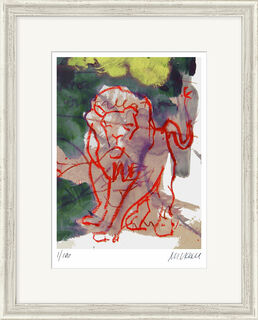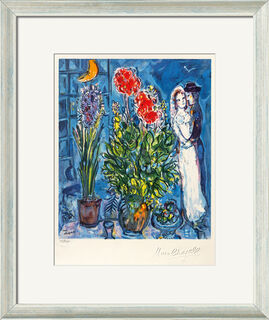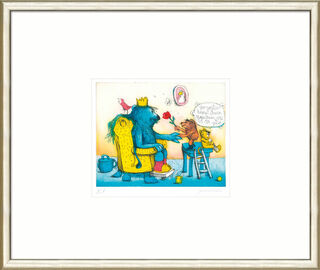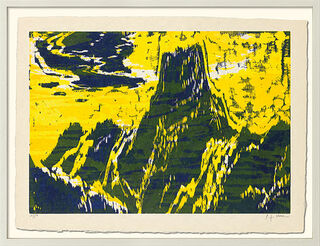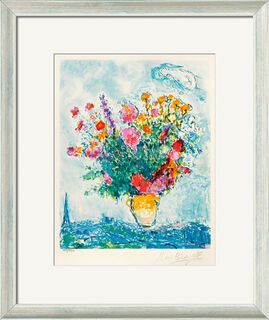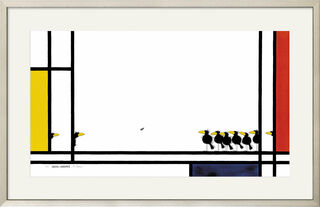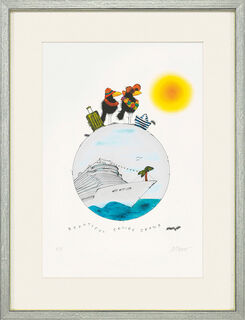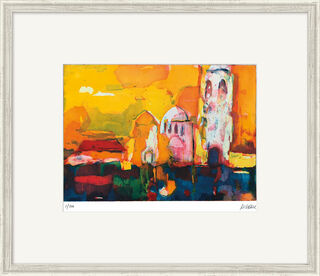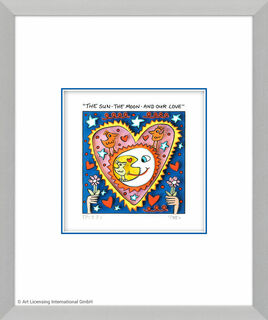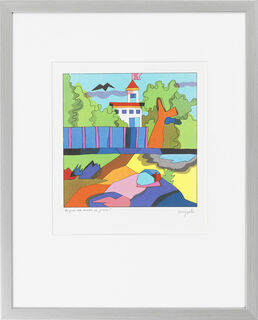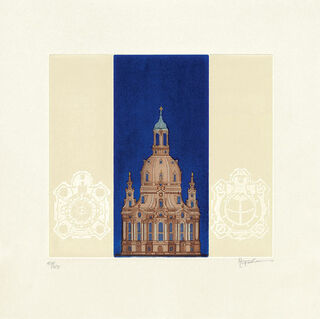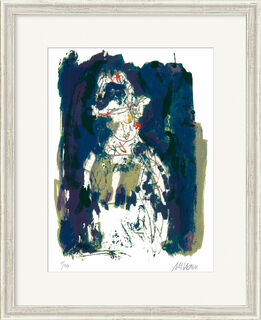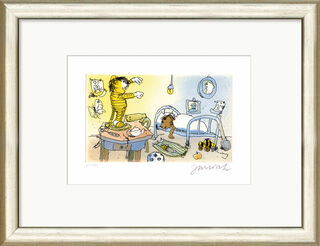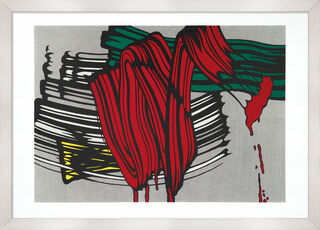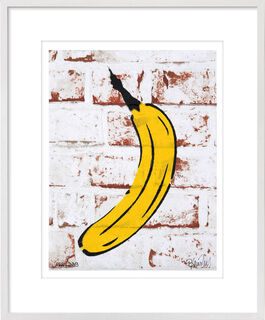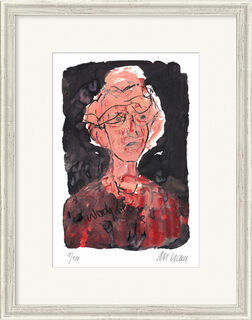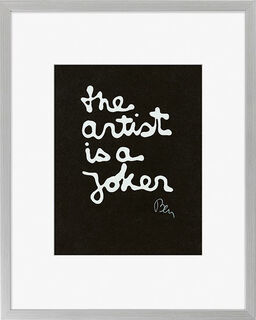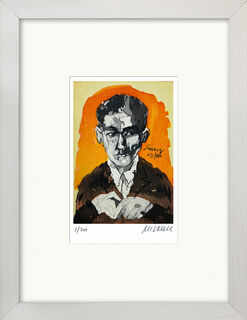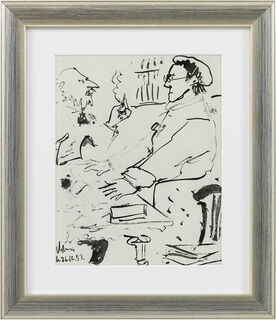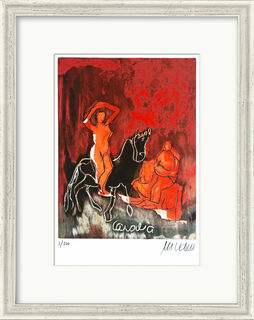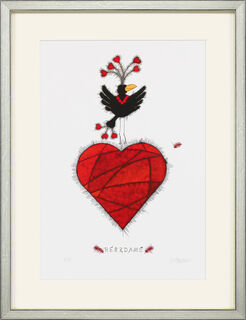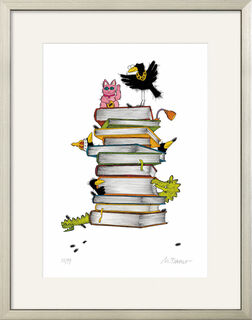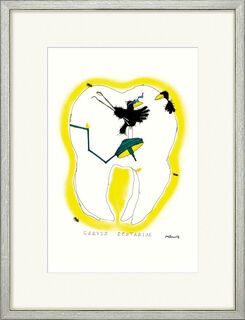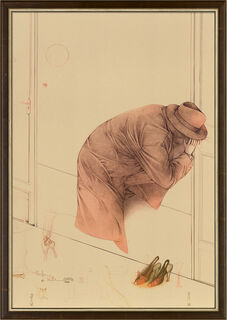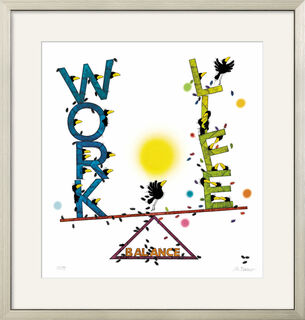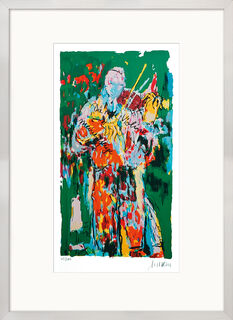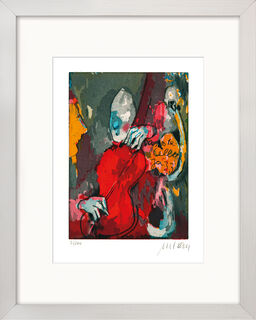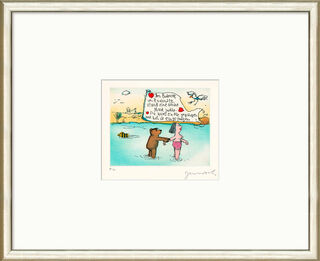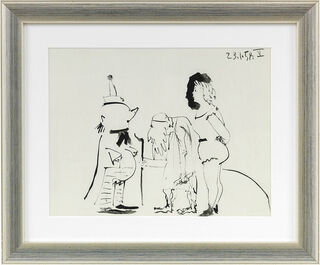Prints
Printmaking in the Visual Arts
Along with painting and drawing, printmaking is one of the most important two-dimensional forms of artistic expression. The various precursors of printmaking art are already several thousand years old, but it was not until the invention of letterpress printing in the 15th century that the foundation was laid for printing techniques in the fine arts. Since the Renaissance, printmaking has been one of the standards in art, and it has not only been able to hold its own in many epochs such as Expressionism or Pop Art but also developed further. Today, all those processes of fine arts are called printmaking, in which colour is applied to the image-forming printing plate and transferred to a medium such as paper, canvas or fabric in large editions. The method by which the motif's structures are transferred to the printing plate depends on the specific technique. Common techniques in the art include relief printing (e.g., woodcut, linoleum cut), through-printing (e.g., serigraphy, screenprint), planographic printing (e.g., lithography), intaglio printing (e.g., etching) and engraving techniques (e.g., copperplate engraving, drypoint).
Serial Art: Original or Reproduction?
With the establishment of printmaking in the visual arts, the question of what characteristics defines a work of art gained new significance. For a long time, the decisive characteristic of an original work was that the artist had created it uniquely and by hand. However, with the emergence of printmaking art, with its potentially large editions, this definition had to be expanded. The standard of a lithograph, screenprint or etching, for example, the uniqueness of the work is no longer in focus, instead, the uniqueness of the creative idea becomes the measure of an original. In addition, the original prints usually have a smaller edition and a corresponding numbering. In addition, they are often marked and authorised as originals by the artist's handwritten signature. However, reproductions involve taking an original and creating a series through photographic reproduction and printing processes. Reproductions can also be of very high quality and may be authorised by artists or descendants, but they lack the direct reference to the "hand of the artist".
Dürer, Picasso, Warhol – World Famous Print Artists
Ever since the printing process became established in letterpress printing from the 15th century onwards and gradually gained acceptance in the fine arts, countless, now world-famous artists have been involved with printmaking. Among the artists who worked with this technique at a very early stage was Albrecht Dürer. At the turn of the 15th and 16th centuries, he created over 300 woodcuts as well as more than 100 etchings and copper engravings. A print by Albrecht Dürer still impresses today with its richness of detail and perfection. A true icon of modern art was another enthusiastic printmaker: Pablo Picasso. He created his first etching at the age of 18 and continued to devote himself to the various techniques of printmaking even in his later years. Today, a Picasso print can easily fetch five-digit proceeds at auctions. Printmaking gained its final recognition as an artistic means of expression during American Pop Art. This was due to its most important representative, Andy Warhol. Warhol not only appreciated the technical side of screenprint, but he also made it an important element of his artistic philosophy. He elevated serial reproduction to a concept, and thus specifically questioned the uniqueness of the work and the value of artistic creation.
Buy Prints at ars mundi
At ars mundi, you can buy prints from various art epochs. Sought-after highlights are originals in very small editions, for example, by Joseph Beuys, Erich Heckel, Joan Miró, Georg Baselitz, A. R. Penck or Georges Braque. In addition, you will find many other prints from art history as high-quality reproductions, for example, by Lyonel Feininger, Alberto Giacometti, or Andy Warhol. Furthermore, at ars mundi, you can buy contemporary prints of 20th and 21st-century art, for example, by Corneille, Armin Mueller-Stahl, Günter Grass, or Stefan Szczesny.

